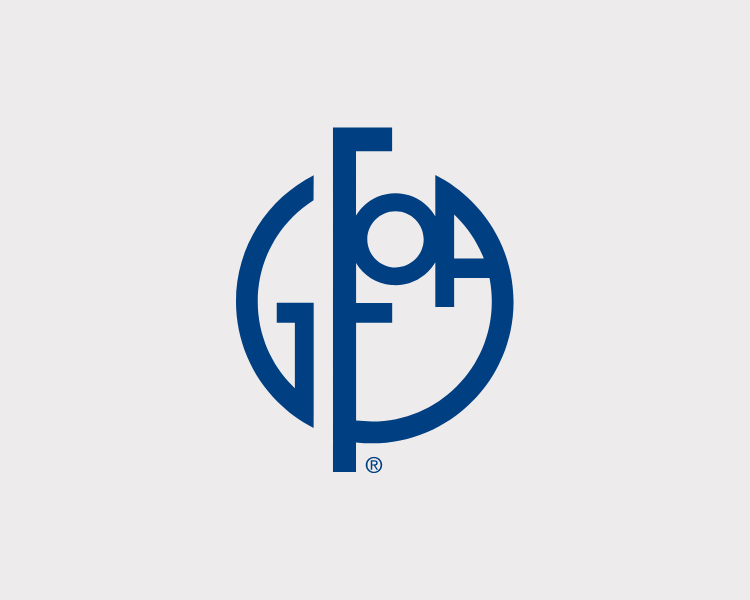
NUMBER THREE IN A SERIES: HOW TO BE ASSURED THE MONEY IS GOING WHERE IT OUGHT TO GO
January 5, 2017
GFOA Awards Recognize Finance Officers for Their Contributions
February 22, 2022Written By: Curtis Coonrod
[Revised: 10/19/2021]
1. Reallocate Local Income Tax (LIT)
Townships generally receive a share of local income tax with the revenue being budgeted in one or more funds. However, the Township Trustee is not bound by that portion of the budget. In fact, the Trustee has the authority to make reallocations such as redirecting LIT revenue during the year. This is done ideally by obtaining a Board resolution, though it is not a requirement to do so.
For example, suppose that one half of your township’s LIT revenue is budgeted in your Township
Assistance Fund with the other half in the Fire Protection Fund. The Trustee can effectively redirect some of the LIT revenue so that only one quarter is deposited into the Fire Protection Fund and three-quarters find their way into the Township Assistance Fund.
What to watch out for: The reallocation should be made at the time the LIT is received and deposited. Once the LIT has been deposited into a fund, an additional appropriation (see below) is required to transfer it to another fund. Also, if LIT is allocated away from a fund, it is imperative to make sure that fund still has enough revenue to cover its expenditures for the current year.
2. Reallocate Rate Cap (Circuit Breaker) Credits
Property tax draws for most townships are reduced by rate cap credits. Rate cap credits are usually allocated in proportion to the size of each fund that has a property tax levy, except for debt service funds. However, the Township can change that allocation.
For example, suppose the Township Assistance Fund has $10,000 of rate cap credits and needs more money. The Trustee can reduce all or some of the Township Assistance Fund rate cap credits -up to the full $10,000 and increase the rate cap credits by a like amount in other funds.
The result?
Up to $10,000 of additional revenue into the Township Assistance Fund.
What to watch out for: The reallocation should be made by the time the draws are received and deposited. Once a tax draw has been deposited into a fund, an additional appropriation (see below) is required to transfer it to another fund. Also, before increasing the rate cap credits, in any fund, make sure that the fund can still collect enough revenue to cover its expenditures for the current year.
No statute requires a Board resolution, but we recommend one be obtained. We also recommend sending a copy of the resolution and/or a letter from the trustee to the County Auditor and the DLGF, so that they can take the reallocation into account in their future calculations.
3. Transfers through the Rainy Day Fund
In most cases, unappropriated funds can be transferred to the Rainy Day fund with Board Resolution. Once the resources are in the Rainy Day Fund, they can be appropriated for general township purposes.
Suppose a Cemetery Fund has $10,000 of unappropriated funds, meanwhile the Township Assistance Fund needs money.
Fortunately, in this instance, up to $10,000 can be transferred from the Cemetery Fund to the Rainy Day Fund. This money can then be appropriated from the Rainy Day Fund for township assistance purposes.
What to watch out for: Transfers to the Rainy Day Fund are limited to 10% of the Township’s annual budget. If the transfer is from a fund with a property tax levy, be prepared for the DLGF to question whether your Township needs to continue that levy in future years.
On top of that, the SBOA has taken the position that certain funds, including the Fire Protection Fund and the Township Assistance Fund, may not make transfers to the Rainy Day Fund.
4. Options for using Cumulative Fire Building and Equipment Fund (Cumulative Fire Fund) balances
As explained above, available, unappropriated balances can be transferred to the Rainy Day Fund and thereafter appropriated for general purposes. That includes transfers from Cumulative Fire Funds to Rainy Day Funds.
What to watch out for: The DLGF will potentially seek answers regarding Rainy Day Fund appropriations. Be prepared to explain why the township continues to need a cumulative fire fund levy if it can afford to transfer balances to other funds.
Similarly as explained above, rate cap credits can be reallocated to Cumulative Fire Funds from operating funds, such as the Township Assistance Fund.
For example, a Township could reallocate $5000 of rate cap credits away from the Township Assistance Fund and into the Cumulative Fire Fund, resulting in $5000 of new resources for the Township Assistance Fund.
If this option suits your township, we recommend a Board resolution and some communication of the reallocation to the County Auditor and DLGF.
5. Additional appropriations
The DLGF is typically over-conservative in approving or making cuts in annual appropriations. As a result, each fund with a property tax levy usually has unused resources. These resources can be accessed by additional appropriations. This can be done by obtaining and preparing the Certified Copy of Additional Appropriations Form, which is made available on the DLGF website. This form will help you calculate how much is available.
What to watch out for: Additional appropriations require 10 days of public notice and a public hearing for a Board resolution as well as DLGF approval.
6. Revise Budget Revenue Estimates
When the current Township budget was adopted, the revenues may have been under-estimated. Watch your ledgers, and you may see current revenues exceeding the budget. If so, obtain and prepare the form Certified Copy of Additional Appropriations Form (SF 55819) from the DLGF website. The form will help you calculate how much is available. If so, an additional appropriation is required to make use of the additional revenue.
What to watch out for: and additional appropriations require 10 days public notice and a public hearing for a Board resolution, and also DLGF approval.
7. Dis-appropriations
The term “dis-appropriation” sounds like a decrease in resources, but in practice, it is an increase. For example: Suppose your Township has an appropriation in the current year, but you now see that it will not be used. The most common example is a personal services appropriation for a job position that has been vacant, or for which the full fringe benefits are not being used. The trustee can declare the dollar amount of the unused appropriation to be void. A Board resolution is recommended. Once the dollar amount is voided, that amount is added back to the available, unappropriated fund balance. It can then be appropriated for other purposes (See Additional Appropriations above).
What to watch out for: When DLGF reviews the additional appropriation, they will want to see the documentation that the original appropriations have been voided and will not be expended.
8. Use the Township General Fund for Township Assistance
Generally, the Township General Fund may be used for township assistance, subject to appropriation by the Board, but the Township Assistance Fund cannot be used for general purposes.
9. Dormant Funds
If the Township has an unused fund on its books, and the purpose of that fund has been fully satisfied, and there are no remaining claims or other obligations against that fund. The Township Board may declare the fund “dormant”. The balance can be transferred to the Rainy Day Fund. The balance can then be appropriated for any purpose. For example, if the Township has remaining resources in a fund that was used to pay bonds or loans, and all bonds and loans are fully paid. The balance in the fund could be transferred to the Rainy Day Fund and later expended for general purposes.
10. Contributions
The Township may accept contributions of cash or physical goods from any source. If the source is a taxpayer, the contribution is tax-deductible to the taxpayer, in the same way as a charitable contribution to a 501(c)(3) organization.
For any of the ideas above, consult your Township Attorney for applicability to your particular township. You may also consult with our team by contacting us at coonrod@coonrodcpa.com.
Additional Long-term, Temporary Options to Consider:
Borrow among funds
Recover property tax shortfalls
Establish or reestablish cumulative funds
Public safety LIT
Temporary loans
*************
If you have questions or would like further information, please contact us at: Coonrod@Coonrodcpa.com
This article is intended to provide information of general interest to local government officials in Indiana. The information is not guaranteed to be applicable or appropriate in particular circumstances. Local officials should consult competent professionals before acting on any information contained in this article. We are not attorneys. The advice of a legal nature should be sought only from qualified attorneys.
We inform you that any U.S. federal tax advice contained in this communication (including any attachments) is not intended or written to be used, and cannot be used, for the purpose of (I) avoiding penalties under the Internal Revenue Code or (ii) promoting, marketing, or recommending to another party any transaction or matter addressed herein.
Copyright © 2021 C. L. Coonrod & Company, CPA P.C.




